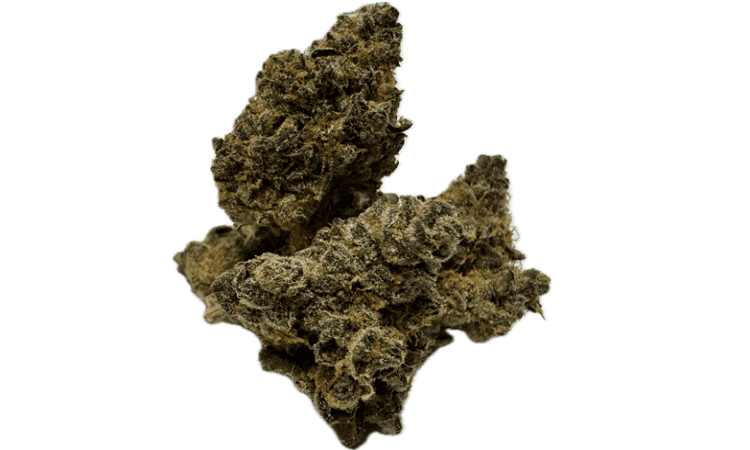
Understanding THCP and Its Effects
THCP, or tetrahydrocannabiphorol, is a naturally occurring cannabinoid found in cannabis. It was first identified in 2019, making it one of the newest discoveries in cannabinoid research. While its presence in cannabis is minimal, researchers have found that THCP interacts with the body’s cannabinoid receptors far more intensely than THC, leading to potent psychoactive effects.
With Delta 8 THC Austin, customers can explore a selection of hemp-derived cannabinoids, including THCP, ensuring a safe and enjoyable experience.
How is THCP Produced in Cannabis Plants?
THCP is created in cannabis plants through a natural biochemical process. It originates from cannabigerolic acid (CBGA), known as the “mother of all cannabinoids,” which serves as the foundation for multiple cannabinoids, including THC, CBD, and THCP.
The plant naturally converts CBGA into tetrahydrocannabiphorolic acid (THCPA). Once exposed to heat, THCPA undergoes decarboxylation, activating THCP and unlocking its psychoactive potential.
This complex transformation is one reason why THCP is rare in nature and must be extracted carefully using advanced methods such as chromatography.
How Does THCP Differ from THC?
1. Potency Levels
THCP is estimated to be up to 30 times more biologically active than THC. This means that even a small dose of THCP can produce effects similar to higher doses of THC.
2. Interaction with CB1 Receptors
THCP binds 33 times more effectively to CB1 receptors in the endocannabinoid system. This increased affinity means that it may produce stronger psychoactive effects, making it a cannabinoid of interest for those who prefer a more intense experience.
3. Dosage Differences
Because THCP is much more active in the body, the required dose is far lower than traditional THC products. Users who are accustomed to Delta-9 THC or Delta-8 THC should start with an extremely small amount when trying THCP for the first time.
4. Duration of Effects
Some reports suggest that THCP has a longer-lasting effect compared to THC. While THC effects generally last between 2 to 4 hours, THCP effects may last up to 5 or 6 hours, depending on the dose and method of consumption.
How Does THCP Interact with the Endocannabinoid System?
The endocannabinoid system (ECS) plays a critical role in regulating mood, pain perception, appetite, and cognitive functions. THCP interacts with two primary cannabinoid receptors:
- CB1 Receptors: Located in the brain and nervous system, responsible for the psychoactive effects of cannabinoids. THCP strongly activates these receptors, leading to more pronounced sensations.
- CB2 Receptors: Found in immune tissues and peripheral organs, influencing inflammation and pain response.
Because THCP interacts more effectively with CB1 receptors, it has stronger psychoactive effects compared to other cannabinoids like CBD or Delta-8 THC.
Potential Benefits of THCP
Although research on THCP is still in its early stages, preliminary studies and user reports suggest that it may have similar benefits to THC, but at lower doses.
1. Stronger Psychoactive Effects
THCP provides an intense euphoric experience, making it popular among those looking for a more pronounced high compared to Delta-9 THC.
2. Potential for Pain Management
Some studies suggest that THCP may have analgesic properties, potentially making it effective for managing chronic discomfort and tension.
3. Relaxation and Sleep Support
Due to its high CB1 receptor activation, THCP may contribute to a sense of deep relaxation, making it appealing for those looking for sleep support.
4. Longer-Lasting Effects
THCP’s extended duration could be useful for those seeking sustained relief from stress, discomfort, or tension.
While these potential benefits are promising, more scientific studies are required to fully understand THCP’s effects.
Methods of Consuming THCP
THCP can be consumed in various ways, similar to other cannabinoids. Some of the most common methods include:
1. Vaping THCP Cartridges
- Provides fast-acting effects.
- Suitable for those looking for an on-demand experience.
- Available in different strains, offering unique flavor profiles.
2. THCP Gummies and Edibles
- Delivers a longer-lasting effect compared to inhalation.
- Takes 30 to 90 minutes for effects to begin.
- Recommended for those who prefer gradual onset.
3. THCP Tinctures
- Allows for sublingual absorption, leading to a fast yet steady onset.
- Provides flexibility in dosing.
- Can be mixed into food or beverages.
4. THCP Flower and Pre-Rolls
- Offers a traditional smoking experience.
- Effects begin within minutes after inhalation.
- Available in different strain options.
Delta 8 THC Austin offers THCP in multiple formats, allowing users to choose their preferred method of consumption.
Is THCP Legal?
THCP is derived from hemp, which makes it federally legal under the 2018 Farm Bill in the United States. However, laws vary by state, and some regions restrict the sale of hemp-derived cannabinoids.
Before purchasing THCP products, check local regulations to ensure compliance. Delta 8 THC Austin provides lab-tested, compliant products, ensuring that customers receive legal, high-quality extracts.
Where to Buy THCP Products?
For those interested in trying THCP, finding a trusted source is important. Delta 8 THC Austin provides:
- Lab-Tested Products: Verified for purity and potency.
- Diverse Selection: Cartridges, tinctures, gummies, and more.
- Secure Online Ordering: Discreet shipping for privacy.
- Customer Support: Assistance with product recommendations and dosing guidance.
Visit Delta 8 THC Austin to explore a variety of hemp-derived cannabinoids, including THCP.


